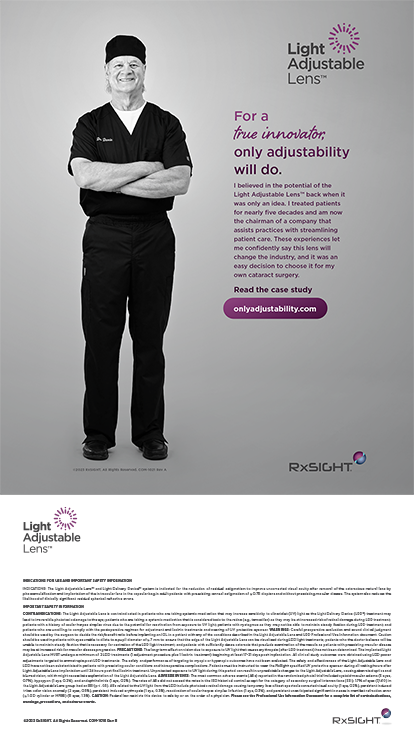Everyone I talk to recently has a similar story: LASIK volume is down, but cataract surgical volume is up. This edition of Cataract & Refractive Surgery Today is therefore timely with its practical cover series on premium IOLs. Volume is rising in this area for several reasons, not the least of which is demographics. In his excellent article, Mark Rosenberg describes the rapid projected growth of senior citizens in the US population—36.1 million in 2005, 45.5 million in 2015, and 61.9 million in 2025. Can we, however, count on an increased volume in standard pay (ie, Medicare cataracts) to pay our bills? As Mark points out, the Medicare reimbursement for cataract surgery is under scrutiny by the US government, with the current administration pushing for a new health care plan that provides increased coverage at decreased cost.
Should you offer premium IOLs? Yes. If you do not, the insightful article by John Doane, MD, can help you to determine whether you and your practice are ready to commit to offering premium IOLs. For those of you already implanting these lenses, this edition of CRSToday contains many pearls for expanding your practice.
In a recent survey of premium IOL users, I learned about what determines how you practice. For example, if you have access to a laser but no ASC, you perform a lot of LASIK enhancements. In contrast, if you have an ASC but no laser, you perform more refractive lens exchanges and limbal relaxing incisions. Whatever your setup, the key to success with premium IOLs is to maximize surgical outcomes. If you do not address residual ametropia, you will miss the opportunity to convert a relatively satisfied patient to a thrilled ambassador for your practice. I have even heard surgeons advocate performing enhancements on patients who have significant residual refractive errors but who are happy with their result! Performing premium IOL surgery without a solid enhancement strategy simply cannot deliver the accuracy that patients have come to expect.
A wise ophthalmologist once told me that any operation that depends on patient selection and managing expectations is flawed. That statement may hold true for many surgical procedures but not, I believe, for the implantation of premium IOLs. Patients have so many choices that we surgeons must become experts in selecting candidates for each lens technology and ensuring that these individuals have reasonable expectations.
I am reminded of a unique finding of one of the FDA trials in which I participated. The investigator at the lower end in terms of traditional metrics (eg, UCVA, BCVA, accuracy) had the patients who were the happiest with their vision on the survey we all conducted. The surgeon with the best metrics scored close to the bottom on the survey. This finding is at the core of understanding premium IOLs. Which surgeon are you, and which scores would you choose?
Stephen G. Slade, MD
Chief Medical Editor


